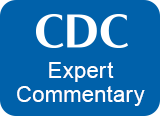Carlos E Mijares, MD is a former Fellow in Allergy / Immunology, pediatrics at University of Kansas. USA; and a former pregraduated student at Universidad Complutense de Madrid. España.
Buscar en
Buscar en
Enfermedades Infecciosas y Microbiología Clínica
Hoy
está universalmente reconocida la renovada y creciente importancia de
la patología infecciosa: aparición de nuevos agentes patógenos, de cepas
resistentes, de procesos con expresión clínica hasta ahora desconocida,
de cuadros de una gran complejidad. Paralelamente, la Microbiología y
la Infectología Clínicas han experimentado un gran desarrollo como
respuesta al reto planteado por la actual patología infecciosa.
Enfermedades Infecciosas y Microbiología Clínica es la Publicación
Oficial de la Sociedad Española SEIMC. Cumple con la garantía científica
de esta Sociedad, la doble función de difundir trabajos de
investigación, tanto clínicos como microbiológicos, referidos a la
patología infecciosa, y contribuye a la formación continuada de los
interesados en aquella patología mediante artículos orientados a ese fin
y elaborados por autores de la mayor calificación invitados por la
revista.
Vol. 34. Núm. 01. Enero 2016
Editorial
Infección por Neisseria gonorrhoeae: Puesta a punto
Neisseria gonorrhoeae infection: State of the art
Judit Serra-Pladevall, Antònia Andreu Domingo
Enferm Infecc Microbiol Clin. 2016;34:1-2.
Originales
Sensibilidad a antimicrobianos y tipado de cepas de Neisseria gonorrhoeae procedentes del sur de España, 2012–2014
Antimicrobial susceptibility and typing of Neisseria gonorrhoeae strains from Southern Spain, 2012–2014
Fernando Cobo, Mª Teresa Cabezas-Fernández, Mª Isabel Cabeza-Barrera
Enferm Infecc Microbiol Clin. 2016;34:3-7.
Rendimiento diagnóstico de la procalcitonina y la proteína C reactiva para predecir meningitis bacteriana en los ancianos en urgencias
Diagnostic usefulness of procalcitonin and C-reactive protein in the Emergency Department for predicting bacterial meningitis in the elderly
María Isabel Morales-Casado, Agustín Julián-Jiménez, Fernando Moreno-Alonso, Eder Valente-Rodríguez, Diego López-Muñoz, José Saura-Montalbán, Rafael Cuena-Boy
Enferm Infecc Microbiol Clin. 2016;34:8-16.
- Resumen - Abstract - Texto completo - PDF
Identificación de Mycobacterium spp a través de métodos moleculares en el Laboratorio de Salud Pública de Bogotá, Colombia
Identification of mycobacteria to the species level by molecular methods in the Public Health Laboratory of Bogotá, Colombia
Johana Esther Hernández-Toloza, María de Pilar Rincón-Serrano, Yamile Adriana Celis-Bustos, Claudia Inés Aguillón
Enferm Infecc Microbiol Clin. 2016;34:17-22.
- Resumen - Abstract - Texto completo - PDF
Vacunas acelulares (DTPa/dTpa) contra la tos ferina: duración de la protección
Acellular vaccines (DTPa/dTpa) against whooping cough, protection duration
M. Vicenta Rigo-Medrano, José L. Mendoza-García, Adelina Gimeno-Gascón, Jorge Roda-Ramón, Israel Cremades-Bernabeú, Pedro Antequera-Rodríguez, Pedro J. Alcalá-Minagorre, Victoria Ortiz-de la Tabla, Juan Carlos Rodríguez-Díaz
Enferm Infecc Microbiol Clin. 2016;34:23-8.
- Resumen - Abstract - Texto completo - PDF
Simplificación a monoterapia con inhibidores de la proteasa potenciados desde regímenes con tenofovir: impacto en la función renal
Switching from tenofovir containing regimens to boosted protease inhibitor monotherapy: Impact on renal function
Miriam Estébanez, Jose I. Bernardino, Lucía Serrano, Ignacio Pérez-Valero, Francisco X. Zamora, Maria L. Montes-Ramírez, Juan J. González-García, Jose R. Arribas
Enferm Infecc Microbiol Clin. 2016;34:29-32.
Estudio poblacional de seroprevalencia de anticuerpos frente al virus de la hepatitis A en la Comunidad de Madrid, 2008-2009
Population study of seroprevalence of antibodies against hepatitis A virus in the Community of Madrid, 2008-2009
Luis García-Comas, María Ordobás, Juan Carlos Sanz, Belén Ramos, Araceli Arce, Dolores Barranco
Enferm Infecc Microbiol Clin. 2016;34:33-8.
- Resumen - Abstract - Texto completo - PDF
Hepatotoxicidad en el lactante sano expuesto a nevirapina durante el embarazo
Hepatotoxicity in healthy infants exposed to nevirapine during pregnancy
Pablo Iveli, Antoni Noguera-Julian, Pere Soler-Palacín, Andrea Martín-Nalda, Núria Rovira-Girabal, Clàudia Fortuny-Guasch, Concepció Figueras-Nadal
Enferm Infecc Microbiol Clin. 2016;34:39-44.
- Resumen - Abstract - Texto completo - PDF
Formación médica continuada: salud internacional y atención al viajero
Estrategias de cribado en población inmigrante recién llegada a España
Population screening strategies in recent immigrant to Spain
José-Luis Pérez-Arellano, Cristina Carranza-Rodriguez
Enferm Infecc Microbiol Clin. 2016;34:45-52
- Resumen - Abstract - Texto completo - PDF
Documento de consenso
Documento de consenso sobre las alteraciones psiquiátricas y psicológicas en adultos y niños con infección por el virus de la inmunodeficiencia humana
Consensus document on psychiatric and psychological aspect in adults and children with HIV infection
Enferm Infecc Microbiol Clin. 2016;34:53.e1-e14.
- Resumen - Abstract - Texto completo - PDF
Executive Summary del Documento de Consenso sobre alteraciones psiquiátricas y psicológicas en adultos y niños con infección por el VIH
Executive summary of the consensus document on psychiatric and psychological aspects in adults and children with HIV infection
Enferm Infecc Microbiol Clin. 2016;34:54-60.
Revisión
Antibiograma rápido en Microbiología Clínica
Rapid antibiotic susceptibility test in Clinical Microbiology
Gabriel Alberto March Rosselló, Miguel Ángel Bratos Pérez
Enferm Infecc Microbiol Clin. 2016;34:61-8.
- Resumen - Abstract - Texto completo - PDF
Cartas científicas
Queratiris por Colletotrichum gloeosporioides y reactivación de Herpesvirus
Keratitis due to Colletotrichum gloeosporioides and Herpesvirus reactivation
María Borrás-Máñez, Leticia Ortega-Evangelio, Jesús J. Gil-Tomás, Juan M. Tomás
Enferm Infecc Microbiol Clin. 2016;34:69-70.
Pileflebitis por Aeromonas caviae secundaria a colecistitis aguda
Pylephlebitis due to Aeromonas caviae secondary to acute cholecystitis
Julio César Vargas-Romero, Mario Fernández-Ruiz, Irene Muñoz-Gallego, Ángel Sanza
Enferm Infecc Microbiol Clin. 2016;34:70-2.
Fiebre prolongada por Streptococcus equi spp. zooepidemicus (endocarditis aórtica complicada con aneurisma micótico infrarrenal)
Prolonged fever Streptococcus equi spp. zooepidemicus (endocarditis aortic complicated with mycotic aneurysm infrarenal)
Francisco Javier Redondo Calvo, Juan David Valencia Echeverri, Vanesa Esteban Alvarez, José Carlos González Rodriguez
Enferm Infecc Microbiol Clin. 2016;34:72-3.
Síndrome sepsis-like y meningoencefalitis aguda por parechovirus tipo 3
Sepsis-like syndrome and acute meningoencephalitis due to parechovirus type 3
Verónica García, Luis Escosa, María Cabrerizo, María Pilar Romero-Gómez
Enferm Infecc Microbiol Clin. 2016;34:73-4.
Poliadenitis como forma infrecuente de presentación de fiebre Q aguda
Polyadenitis as an unusual form of presentation of acute Q fever
Vicente Giner-Galvañ, María del Carmen Nicolau-Laparra, Gladys Carolina Arregocés-Muñoz, María José Esteban-Giner
Enferm Infecc Microbiol Clin. 2016;34:74-6.
Artritis séptica facetaria con absceso epidural y paraespinal: a propósito de un caso
Septic arthritis of a lumbar facet joint with epidural and paraspinal abscess: Report of a case
Judith Álvarez Otero, Francisco Fernández Fernández, María González Vázquez, Javier de la Fuente Aguado
Enferm Infecc Microbiol Clin. 2016;34:76-7.






















